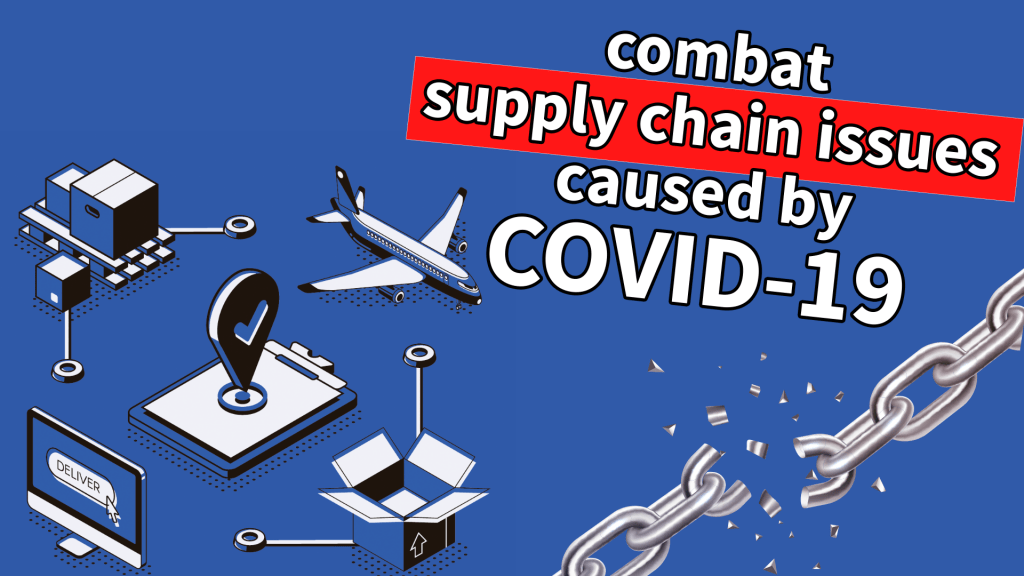In this week’s Surge Session, we discuss how one should go about creating a content hierarchy for SEO. Creating a structured content hierarchy for SEO is an important, but often overlooked, factor of improving search engine visibility. We cover the best practices for creating SEO friendly content and how to plan your services and blogs strategically. Our CEO, Duran Inci, is joined by Marketing Specialist, Carlo Ricordi.
What is a Content Hierarchy and What Does it Mean for SEO?
When we say content hierarchy, many people get confused. They see a complicated task or process.
Content hierarchy is portraying your message for your product or services and give information to the users online in a structured manner. We previously did a search session on structured content before. Unlike with structured content, you build a content hierarchy before you start a marketing strategy.
Now you can build a content hierarchy for your new website and update your existing website’s hierarchy. Refine a Facebook campaign or a paid search campaign. You can do this even for traditional marketing, like an online Public Relations venture, or if you’re going through a rebranding process.
In content hierarchy, you create different categories and groups of content before you actually start a business. Or you update your existing brand positioning with that content hierarchy. We’ll talk about that, and we’ll give some examples.
Let’s say you create a new business, website or specialized niche space. First, you should build your menu structure. First, consider who you want to see the work.
Organizing Your Content Hierarchy for User Experience and Search Engines
Open up a Word document, and put the titles. Consider this your homepage template.
Review your services. Check the industries you serve. List a product section and the categories of products, and under that, you are going to have subcategories and subproduct sections for a niche.
Google loves structured content and content hierarchy. Your users will be able to track this carefully. From an organic SEO standpoint, you’ll know the keyword ranks.
Couple your pages with the keywords that you want to rank, for the audience you want to please. Check the keywords’ search volume.
On the Optimum 7 website, we have a page that was titled What We Do. The page is optimized for “what we do”, but nobody’s searching for that specific keyword. We should’ve said “How to Do Marketing” or “How to Execute a Marketing Strategy”.
Many clients and websites do not optimize because they lack a content hierarchy. They didn’t build this before they started their business, or decided to add one later. Why is this very important? A viable content structure will allow you to rank online for these competitive terms and convert better.
How to Set Up an SEO-Friendly Content Hierarchy
Under Optimum7 we have the Services, Industries, and Custom Functionalities. And you create a bunch of other content sections that receive ample traffic.
Challenges of Creating a Structured Content Hierarchy: an SEO View
What is the biggest challenge that you have seen while creating these?
Because you have to look at search volume, you have to look at content. See what needs editing. You have to have a layout. Design, and organize.
Give us the most challenging three things that you went through.
The first thing that you want to look at is the actual SEO standpoint. The keywords you’re going after. And most importantly, the titles of all of these pages. Because if your titles aren’t optimized, if you’re choosing the wrong keyword, it could mean the difference between a couple of monthly users and hundreds of thousands of monthly users.
Free & Paid SEO Tools for Keyword Research
What is the best way to do that? What tools did you use to determine if the search volume was there for that specific content?
We try and look at every potential industry leader. Moz is one, and Ahref is another. These are paid tools.
If you’re looking for a free tool, Keywords Everywhere is the browser extension that you can use. Within Chrome, the extension will show you the search volume of these terms in the actual search engine results page. You can research keywords at a much faster pace.
If you choose the right keyword universe and infrastructure, it’s a lot easier for you to rank for these terms, get traffic, and locate leads. Know competitive these keywords are and if you’re ranking anywhere for these keywords yet.
As an example, we do SEO services. Optimum7 doesn’t rank on the first page of Google for SEO services. It’s incredibly competitive.
Targeting “Buy Terms” in your Keyword Research
I need to spend much money on backlinks and content to be able to rank for SEO. Is “SEO services” a buy term for me?
I have ranked for SEO services before. “SEO services” is not a buy term for me because it could be somebody looking for information, right? Better terms include, “how much does SEO cost?” “SEO pricing,” “SEO for the industry,” “SEO for colleges,” and “SEO for universities”. I get leads for those and can rank them in Google Analytics.
You have your own examples. No matter the industry, you have to look at “buy terms”.
If you don’t have the Google Analytics metrics yet, you need to think from your current audience. You could conduct a survey and ask, “If you were going to buy SEO, ID badges, Keto products, or CBD oil, what would you search for?”
Now some people are going to not think this through and say, “Yeah, I’ll search for CBD oil.” Not likely. You’re not going to search for CBD oil.
“Buy CBD oil,” is a simple buy term. Others include “Where can I buy CBD oil?” and “CBD oil in Miami.” “CBD oil in Coral Gables,” which is a city within Miami, is a better buy term because of the specificity. “CBD stores near me,” is a great buy term because Google will search by the user’s location.
When you’re doing your content you need to go after the buy terms. That’s why the content hierarchy process is very important.
We use WordPress. We use the site to post types for these different content structures. Why? WordPress allows us to create these layouts and then plug in the content very fast and duplicate these different pages.
If you want to look at an example of this, you can go to Custom Programming on our site. Or Google “custom programming” and you’ll see our page.
Look at the structure. That’s a WordPress Post Type. Every single functionality has its own page, but we have templates. We don’t have to do HTML every single time.
So when you do these layouts, again, what’s the ease of using a custom post type and how hard is it to create that new layout?
When you’re using these custom post types, you already have the outline structure for your content already laid out. You’re not creating brand new content from scratch necessarily. You already have established guidelines.
It’s really important that you finish this content hierarchy before you even start your layout.
Planning a Content Hierarchy for Service Pages
What do you need to do to perfect that first layout view?
The first layout is the most important. For me personally, the copywriters and strategists collaborated.
Especially when you’re talking about web content, you want your most important value proposition, first. Because remember, people on the internet have short attention spans. If they have to scroll all the way down to the bottom of the page before they get to the relevant information for your product or service, they’re probably going to leave your page before they even get there.
I always like to put the most important, most relevant content first. When we’re talking about a service page, often this is relating to a common pain point that they may have.
As an example, consider SEO services. Are you not getting the right traffic? Or are you not getting the right sales that you’re looking for? Or identifying with some of these pain points that your audience may have.
The copy you write can go long because you want to rank for it. But within the first couple of sentences or paragraphs, you have to clarify your value proposition. Marketing and sales are integrated. Your copy needs to sell.
What’s the first step of selling?
Inflicting pain. It’s finding the pain point of the prospect, of the user, and using that point to influence them to contact you. Make them desire your services.
If you are not in the technology field or internet marketing, this may sound like gibberish. You should perform content hierarchy for your business. If you cannot, therefore you should hire a consultant or a company that specializes in the practice.
Do you have this for your own business and copy? Are you talking to the decision-makers? What do they prioritize?
My decision-makers are business owners, CEOs, owners, founders, or partners. They seek increased revenue, sales, and profits. I shape every single message that I have for the bottom line. And I have to practice what I preach.
Your copy cannot be derived, boring, or generic. It needs to sell and it needs to be good. Tell a story, with the facts.
Actionable Steps to Building a Content Hierarchy for SEO
Create your content hierarchy draft outline. Send it to an expert to edit and approve. Build the layout first before you start doing these content hierarchy sections. Once you have your first layout and sample, identify the most important things.
For example, on that custom programming page, we have 650 functionalities. When I first made it live, it only had 20. We went from 20 to 650, and we had the content hierarchy already and we’re even adding more, as we speak, on a weekly basis.
Every single term ranks. You can search and filter for BigCommerce, Volusion, 3dcart, Magento, or Shopify. The sections show up because I built the authority for it and I built a content hierarchy before I started doing that section.
Keep adding important features. Incorporate calls to action. Implement a contact form. Track stats on Google Analytics.
Soon, a content hierarchy will allow you to rank for thousands of keywords under one section. Once that happens, your entire site will benefit.
Does Content Hierarchy Apply To Any Industry?
Yes. Let’s take the case of law, which involves attorneys. If you have a website and you are a lawyer and you’re an attorney, you want to talk about what type of industries you serve, right? “Legal services for dentists.” “Legal advice for restaurants.”
People search for these terms constantly. They type, “Lawyers for restaurants” or “Restaurant lawyer.” People writing appropriate structured content can rank for these. Throw me another one.
Or consider CPAs and accounting firms. CPA has different keyword associations. You have to rank accordingly.
Know your specialty. Are you a CPA, accounting manager, services company owner, outsourced CFO, or chief financial officer? Do you do more consultation and forecasting? Or do you do focus on bookkeeping?
If you look at bookkeeping, that’s the top search results. People are not really looking for a literal CPA in their search terms, but they seek the gist. As a CPA, you can use the industries angle again.
But another thing you should have, and it doesn’t matter what industry you are in, you should have a content hierarchy and a structured content section for frequently asked questions. These rank well and aid in site navigation.
FAQs should include the following: “Hey, when should I file my taxes?” “If I’m a business can I delay my taxes?” Google these questions, and you’ll see people writing about this stuff.
No matter the industry, you have an important content hierarchy. You have structured content possibilities. And you have frequently asked questions.
Don’t be lazy. Write this content. Publish this content. You will get more leads and more business.
Do you currently have a content hierarchy? Do you need help creating SEO friendly content and planning your services and blogs strategically?
Contact us. We’re here to help.






